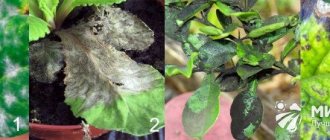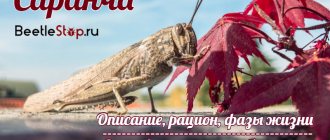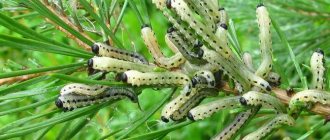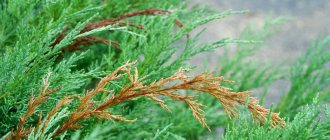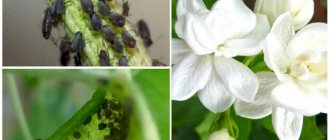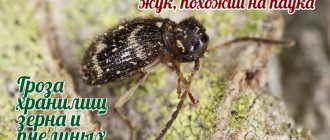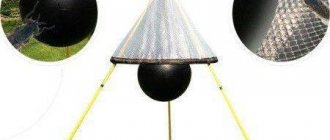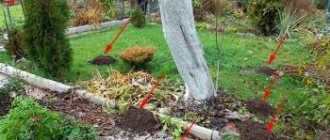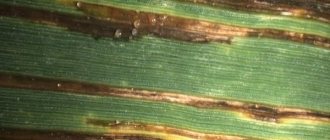Wheat, like other grain crops, is susceptible to various negative factors, which include not only frost or drought, but also the activity of insect pests. In order to prevent a decrease in the productivity of cereal crops and guarantee high yields, insecticidal treatments are regularly carried out on the fields. However, insect attacks on grains do not stop even after they are harvested. When the crop is harvested and sent for storage, field pests are replaced by barn pests, and the damage from their activity is in no way inferior to the damage caused by their field counterparts: - infected products lose weight; — the processes of self-heating of the grain mass are accelerated and intensified; — food and seed qualities are lost; — mold processes are activated (penicillosis, aspergillosis); — insects poison the products with toxic secretions, contaminate them with chitinous shells and larval cuticles. The greatest damage to stored crops is caused by beetles that colonize the grain mass and overwinter in the crevices and cracks of granaries. They undergo a complete transformation, that is, they become adult insects, having passed the pupal stage. This stage in the life of pests becomes the only one when they do not damage stored supplies.
A distinctive feature of adult insects is the presence of hard elytra covering the second pair of wings and abdomen necessary for flight. The larvae hatched from eggs have a fleshy body and a pronounced head part, on which the gnawing mouthparts are located. Unlike caterpillars, beetle larvae have legs that are poorly developed or are present only on the front part of the body.
There are several types of these pests, the most common in our country. Each of them has its own differences and behavioral characteristics:
Rice weevil
External structure: Small beetle 2-3.5 mm long. The body is brown-brown, matte. The beetle's head is elongated into a trunk-like rostrum, the antennae are curved forward. A characteristic feature is the presence of four reddish spots - two located at the base and another pair closer to the end of the elytra. The beetle's wings are developed and can fly.
The larvae are fleshy, 2.5-3 mm long, with a convex back and a brownish head, white, legless.
The pupae reach 2.75 mm, are shaped like an adult insect, and change color from white to yellow over time.
Lifestyle: The female gnaws a hole in the grain where she lays an egg. After 6-9 days, the larva appears and begins to eat the nutritious part of the grain. It first moves towards the center, and then along the groove, i.e. two larvae can develop in one grain at once if they end up on opposite sides. After 2-3 weeks, pupation occurs, which lasts 5-10 days. Then adult beetles emerge from the grains. In total, a female can lay from 300 to 570 such eggs in her life. Depending on conditions, from 2 to 4 generations of beetles can change in a year.
The favorable temperature for the life of the rice weevil is 27-30 oC. They spend the winter inside the grains, and in the absence of produce, they clog up in cracks, joints and other secluded places in structures. If the environment cools to 13 oC or lower, and grain moisture reaches 10% or less, the development of this pest is interrupted and the beetles begin to die.
Rice weevils are active and can travel long distances. Fields adjacent to an infected granary can be affected by them. They are capable of freezing if they feel threatened - any shake, and the beetle pretends to be dead.
Prevalence: Found in the southern regions of the Russian Federation. In the northern parts of the country, it can live only in warm rooms, where it enters along with brought grain shipments, where it successfully winters. It starts more often in places where there are problems with ventilation.
Damage: Adults spoil wheat throughout their lives, eating the outside of the soft parts of the grains. The greatest damage is caused by the larvae, which eat the grain secretly, from the inside. Due to its heat-loving nature, the beetle is able to penetrate deep into the embankment. Affected products lose from 35% to 75% of weight. The rice weevil is considered the most common pest. The damage caused to grain by other insects is always compared with the damage caused by them (the harmfulness coefficient is 1).
Barn weevil
External structure: The body of this beetle is more cylindrical than that of the rice beetle. It is significantly larger than its counterpart - 3-4.5 mm in length. In front is a rostrum with curved antennae (they are also called grain elephants). In females it is curved and longer than in males. The shell is shiny. The elytra are fused (not capable of flight), and longitudinal grooves are clearly visible on them. The color of the insect changes with age from light brown to brown-black.
The larva is larger than that of rice - 3-4 mm.
The pupa is 2.7-5 mm long.
Lifestyle: Development is similar to rice. It is less fertile - the female lays 150-300 eggs. The behavior of the larva is different in that it immediately strives to occupy the center of the grain (one grain - one larva). The barn weevil lives longer; a maximum of 2-3 generations can be replaced in a year. It is more resistant to cold. The favorable air temperature for it is 25 oC. A decrease to 3 oC puts the beetles into torpor, and at 0 oC they die (in dry grain faster than in wet grain).
Prevalence: Found in all regions of Russia. In the southern parts of the country it is more active and reproduces faster.
Harm: Damages grains similar to rice. Less widespread, but more dangerous (harmfulness coefficient 1.5). It tolerates cold more easily, and therefore infects the surface layers of products (0.5 m deep).
Characteristic
The granary weevil is also called the grain weevil. This is an insect whose body does not exceed 5 mm. The size of the bug depends on the food it consumed during its development. The body shape resembles a slightly narrowed cylinder, the surface is shiny. The color of a broadmouth depends on its age. Thus, young individuals are colored light brown, while adults are almost black in color.
Barn weevil
The head of the weevil is very small, extended forward into a rostrum, at the end of which there is a mouthparts with which the grain weevil gnaws its food. The antennae located on the head are curved. The insect has wings: elytra with deep longitudinal grooves, membranous wings.
Interesting!
Despite the fact that the granary weevil is “equipped” with wings, it moves only with the help of its legs, since the development of the wings does not allow them to be used for these purposes.
Corn weevil
External structure: Similar to the rice weevil, but larger than its counterpart - from 2.5 to 5 mm in length. There is a slight gloss on the beetle's shell. The 4 reddish markings on the elytra are a brighter shade than the rice one.
Lifestyle: Similar to the rice weevil.
Distribution: Southern regions of Russia and central Chernozem region.
Damage: Similar to rice weevil. Its resistance to cold can compete with that of barn, and therefore its development is more difficult to contain by cooling the embankment.
Chemical methods of controlling weevils
One of the effective methods of getting rid of barn weevil is chemical disinfection of grain - a radical measure consisting of aerosol or gas treatment. Aerosol disinfection is carried out using the drugs “Aktellik”, “Karate”, “Fufanon”, “Arrivo”. This treatment, the advantage of which is the high effectiveness of the drug, is carried out by special organizations. The disadvantages of this method include the long period of time before permission to sell grain.
Gas disinfection is carried out with such drugs as Foskom, Alfos, Phostoxin, Magtoxin. The room must first be carefully sealed, and fumigation must be carried out with the involvement of specialized organizations.
Large flour beetle
External structure: A fairly large beetle, 13-17 mm in size, with clear antennae and long, dully shiny elytra, on which longitudinal stripes can be seen. Capable of flight. Young beetles are light brown in color, which becomes almost black over time. The legs and abdomen of the beetle are brown in color.
The eggs are white, oval in shape, 1.65-1.80 mm long.
The larvae are worm-shaped (they are also called mealworms), thick, from 25 to 35 mm long. In the first days it is distinguished by a white color, which over time turns into a yellowish-brown color. On the anterior segments of the body there are three pairs of short but well-developed legs; at the posterior end there is a pair of spines and two tubercles.
The beetle pupa is creamy yellow, 14-19 mm in size. There are two spikes at the rear end.
Lifestyle: The females of this beetle do not gnaw through grains, but lay eggs directly into the grain mass (usually in July-August). One individual can lay from 270 to 570 pieces. After 10-14 days, larvae appear and begin to damage the stored products. This stage of development lasts a very long time, and at low ambient temperatures it lasts up to 600 days. The larvae are extremely voracious, but can, if necessary, go without food for up to several months. They overwinter successfully at 0 oC, even with cold temperatures down to -5 oC they can survive for about 3 more months. To pupate, they get out of the grain mass and climb into cracks, behind partitions and into debris that accumulates in the room. After 6-47 days, an adult beetle emerges. Depending on the conditions, it takes from six months to 1.5 years to change the generation of these pests.
Prevalence: Found in both the southern and northern regions of Siberia and the European part of Russia.
Damage: Beetles and larvae eat the germ of the grain and feast on the mealy part. Damaged grains begin to rot and lose their seed quality. They enjoy eating flour and bran. Pests cause the greatest damage to wet and musty products. The larvae are very mobile, move easily in embankments and can penetrate to great depths. During their long lives, beetles produce huge amounts of toxic excrement that contaminates products. At the larval stage, the insect molts up to 30 times, and all shed shells remain in the mound. Adults often fly from contaminated products to new batches of grain at night.
Diseases and pests of grain stocks and the consequences of their development and reproduction
What threats to the crop can arise during grain storage and what factors significantly affect the quality of grain during this period? The biggest and most significant danger is hidden under the names “pests of grain stocks” and “diseases”. Among the latter, especially harmful are seed mold, fusarium, black germ, or Alternaria, etc. They can cause enormous damage and lead to catastrophic losses and intoxication of products in the form of mycotoxins. Thus, if a batch of grain contains 1 mg of aflatoxin B1 per kilogram of grain, then it destroys all its beneficial properties, and the batch of grain itself becomes unsuitable for food and feed purposes.
Seed storage, as is known, is a long-term technological process , during which various biotic and abiotic factors operate, primarily humidity, temperature, access to oxygen, the activity of barn pests, and the development of diseases.
During grain storage, the grain mass in granaries is a mixture of various living components: grain, microorganisms, insects, mites, rodents with their inherent physiological functions... These components are interdependent and interdependent. Grain damaged by common barn pests (barn and rice weevils, large and small weevils, pea and bean weevils, grain borers, red short-whiskered and Surinamese flour beetles, grain moths, mill and southern barn moths, flour mites, and among rodents - the house mouse, gray and black rats) and contaminated as a result of their vital activity, self-heats, molds, and collapses. In such an environment, a powerful source of primary infection of fungi from the genera Fusarium, Aspergillus, Penicillium, Alternaria, etc. arises, which produce significant amounts of antibiotics and mycotoxins.
Most barn pests begin to damage and colonize grain during the growing season of plants. A significant number of types of granary pests (rice weevils, grain moths and worms) enter the storehouse with grain, which they colonize in the fields during the growing season of plants or during threshing and exposure to threshing floors, as well as through the clothes, shoes of workers, or introduced by rodents and birds. The bulk of barn pests accumulate in places where grain stocks are permanently stored. Thus, the granary weevil lives and develops only in storage facilities.
According to the main departments of the State Food and Consumer Service in the regions, in farms in the Volyn, Kyiv, Kirovograd, Rivne and Cherkasy regions in 2022, mainly feed grain and sometimes seed material were infested with granary pests. In particular, there were 1-3 copies per kilogram of grain. granary weevil, 1-4 copies. mucoeda, 2-5 caterpillars of the mill moth, 5-10 copies. flour mite. They infected 8-13, max. 28-31% of tested grain (560 tons). Thus, significant quantities of grain infested this year with barn pests are stored.
Barn pests, having a high potential ability to reproduce, quickly accumulate in significant numbers during long-term storage of grain and conditions favorable for their development. And despite the fact that these insects are small in size, they are very voracious. Thus, the offspring of one female mill moth destroys 17.5 kg of flour during four months of its development, and one granary weevil destroys one kilogram of wheat grain per year. Feeding on grain, pests contaminate it with molt skins, dead individuals, excrement, and cobwebs. This leads to an increase in temperature and humidity in the place where the grain is stored, which leads to spoilage of a certain part of it. Gnawed or damaged grain is more quickly and easily affected by mold, mycotoxins and other toxic carcinogens accumulate in it.
It should be remembered that the formation of large amounts of mycotoxins produced by molds has a fatal effect on human and animal health. High doses of mycotoxins have an acute toxic effect, therefore, for example, aflatoxins and T2 toxin are considered biological weapons of mass destruction. Even a small content of mycotoxins in crop products can lead to serious consequences: damage to tissues, organs and systems of the human body, as well as cancer.
Researchers estimate that about 4% of human cancers are caused by eating mycotoxins. The presence of mycotoxins in feed, even in low concentrations, causes disturbances in the reproductive system of animals. Due to a general decrease in immunity, the number of infectious diseases increases, and they also have a severe course. In regions where control over the quality of plant products is not established, people can die en masse from mycotoxin poisoning, as happened in Kenya in 2004, when more than 100 people died after eating corn contaminated with aflatoxins (J. Reinhardt, Germany) . Therefore, spoiled, moldy grain cannot be used to make baked goods or feed livestock. Such grain will not produce high-quality flour or good bread.
Barn pests also cause great harm to seed material, reducing its performance characteristics. Thus, damaged wheat and corn seeds can lose 27-75% of germination.
The second way through which infection of seed diseases enters granaries is the storage of seed batches containing even a small amount of contaminated, infected and affected seeds by fusarium, black germ, and mold.
It is known that the quality of seeds is largely formed under the influence of crop growing technology, weather conditions during the growing season of plants, methods and modes of post-harvest processing. Infection and contamination of grain crop seeds by pathogens occurs during the growing season of plants.
Numerous studies of the mycobiota of the ear of wheat, rye, and barley during the period of flowering, filling and full ripeness of the grain have shown that the epiphytic mycobiota is represented by more than 50 species of fungi. The dominant species of epiphytic mycobiota are representatives of the genus Fusarium: F. sporotrichella var. poae and others, fungi Bipolaris sorokiniana, Alternaria tenuissima, Aspergillus flavus, representatives of the genera: Cladosporium, Trichothecium, Rhizopus, Mucor, Penicillium.
The endophytic mycobiota of the ear of cereal crops includes more than 40 species of fungi. During ear formation, the endophytic mycobiota is predominantly dominated by anamorphs of the genus Fusarium. The group of typical numerous myxomycetes is represented by species of the genera Fusarium, Bipolaris, Alternaria. Fungi Fusarium culmorum, F. graminearum, F. sporotrichella var. poae, F. oxysporum, Alternaria tenuissim, Bipolaris sorokiniana contaminated the ear during all phases of its development.
Fusarium head blight is considered the most common and harmful disease of cereal grain seeds. Infection of plants with fusarium occurs mainly during flowering, when the ascospores of pathogens mature. Anthers of wheat, rye, and barley are a good nutrient substrate for the growth of fungi of the genus Fusarium, in particular F. graminearum. Fungal hyphae colonize anther tissue, penetrate the embryo and spread along the grain shell.
The degree of damage to grain depends on the type of pathogen and the time of its penetration into the tissue. Depending on this, there are two types of grain damage by fusarium:
The distinct fusarium grain is flattened. Most grains are wrinkled, have pointed sides and a well-pressed groove. They are colored pink due to the presence of mycelium and sporulation of fungi. This type of lesion occurs during early infection of ears of corn in the field (in the flowering phase), mainly with the fungi F. culmorum, F. graminearum and F. avenaceum.
The latent (superficial) form of fusarium infection of grain appears when it is infected late, has a low infectious load, or is damaged during harvesting and storage. Such grain does not differ in appearance from healthy grain: the groove shape and size are close to normal, sometimes swollen, with a peeled shell, but it is a source of infection during storage and sowing.
Mycotoxins produced by fungi during their development do not taste bitter, do not smell, and without special techniques it is impossible to determine their presence. Mycotoxins (from the Greek Mykes, mukos - mushroom + toxikon - poison) are low molecular weight secondary metabolites produced by toxigenic microscopic fungi. Toxigenicity (from the Greek Toxikon - poison + genes - giving birth) is the ability of an organism to form substances that have a toxic effect on other organisms. The most dangerous and widespread toxigenic species of fungi belong to the genera Fusarium, Aspergillus, and Penicillium.
Thus, fungi from the genus Fusarium produce mycotoxins - group A trichothecenes: T-2 and NT-2 toxins, diacetoxyscirpenol; group B trichothecenes: nivalenol, deoxynivalenol (DON), zearalenone, fumonisins (B1, B2, B3, B4), moniliformin.
Fungi from the genus Aspergillus produce ochratoxin A, sterigmatocystin, and cyclopiazonic acid.
Fungi from the genus Penicillium produce ochratoxin, acitrinin, and patulin.
According to FAO, global losses of agricultural products from damage by toxinogenic fungi and contamination with mycotoxins have increased ninefold over the past ten years and in monetary terms (USD) reached 22 billion dollars/year.
In our latitudes, the greatest danger is represented by fusaria . They infect the grain, contaminate it with mycotoxins in the ear and continue their development on the grain during its storage, increasing surface sporulation by 30-35 times and intra-seed contamination by three to four times, as well as repeatedly increasing the content of mycotoxins in it.
To reduce the contamination of grain with fusarium and the level of its contamination with mycotoxins, it is necessary to apply a system of appropriate measures both in the pre-sowing, growing and post-harvest periods. It should be remembered that the spread of fusarium head blight significantly depends on the predecessor, the soil cultivation system, the resistance of the variety, the physiological state of the plants, and the phytosanitary state of the crop.
In the pre-sowing period, an effective measure against superficial and internal infection of the pathogens of fusarium head blight is the treatment of seed material. Carrying out this measure prevents the endogenous transfer of Fusarium graminearum infection from infected seeds to the ear, which protects it from the manifestation of Fusarium head blight and the accumulation of mycotoxins in the grain of the new harvest. For this purpose, the seeds should be treated with highly effective disinfectants based on active substances and their compositions: fludioxonil; fludioxonil and cyproconazole; azoxystrobin, tebuconazole and fludioxonil; fludioxonil and difenoconazole; fludioxonil, thiamethoxam and tebuconazole; difenoconazole, fludioxonil and thiamethoxam. These drugs block the development of pathogens, prevent the penetration and spread of mycelium throughout the plant from seed germination to the formation of spikelets. Dressing agents significantly reduce the accumulation of deoxynivalenol (DON) in the crop, a mycotoxin produced by the causative agent of fusarium in wheat.
During the growing season of wheat and barley, effective fungicides based on active ingredients should be used against fusarium head blight: cyproconazole and propiconazole; azoxystrobin, propiconazole and cyproconazole; propiconazole and prochloraz; flutriafol; flutriafol and tebuconazole; triadimefon and flutriafol, tebuconazole; thiophanate-methyl, tebuconazole and cyflufenamide. The highest effectiveness of the preparations is manifested when they are used at the beginning of heading (when 30-50% of the plants are in the phase of beginning to emerge).
The grain harvest should be harvested in dry weather when the grain is completely ripe. The content of mycotoxins in the grain must first be determined. Delays in harvesting, especially in wet weather, lead to an increase in mycotoxin content.
The operations of cleaning, drying grain, carrying out air-thermal heating of grain material, irradiating it with sunlight in piles on currents and in granaries, bringing its humidity to 13-14%, placing it in separate batches with the same degree of Fusarium infestation are important. Carrying out this series of measures will preserve the quality of the seeds by preventing the harvested crop from becoming over-infected with Fusarium, Alternaria, mold and other diseases.
The mode of storing seeds in a dry state is the main principle of maintaining its high viability in batches of seed of all grain crops and the quality of food grain throughout its entire storage period.
Grain of wheat, rye, barley, oats is considered dry if, when analyzing the seeds, it contains no more than 14% moisture. The optimal humidity indicator for long-term storage of production batches of seeds should be 1-2% below the critical humidity, which depends on the chemical composition of the grain. A grain batch that is well prepared (cleaned of impurities, disinfected and cooled) can be stored in warehouses for four to five years, and in elevator silos for two to three years, provided that appropriate conditions are maintained during the storage period.
The intensity of grain respiration at temperatures from 0 to 100°C will be insignificant even at high humidity levels. The critical moisture content of wheat grain is clearly manifested only at a temperature of 180°C and above. Therefore, during grain storage, the temperature regime should be maintained within the range of 0–100°C.
It should be remembered that storing grain with high humidity leads to the development of a fungal infection, which penetrates from the surface of the seed into the deeper layers of the grain, and mycotoxins accumulate. It is imperative to monitor the quality of grain at the time it is accepted into storage. During grain storage, the temperature of the grain should be systematically monitored, appropriate measures should be taken, and the condition of the grain should be monitored for contamination with toxinogenic fungi.
To signal the appearance and limit the number of pests of grain stocks, environmentally friendly means are used - pheromone or glue traps. When the slightest cold snap occurs, an effective measure is to cool the grain by ventilating it by opening doors, windows, active ventilation using stationary or mobile units, as well as moving the grain by conveyors, passing it through grain cleaning and other units with cold air blowing. In winter, a reliable way to limit the number of pests in storage facilities is to freeze the grain. In this case, the resistance of pests to low temperatures should be taken into account (most insects die within 24 hours at temperatures below -15°C). With systematic remote control of grain temperature, an artificial reduction to -5-100°C is used, which ensures the destruction of pests and increases the duration of grain storage.
Work on preventive and disinfecting chemical treatment (grain fumigation) is carried out only by specialized enterprises that have the appropriate state licenses to carry out these works.
pests diseases of grains back to the list
Big dark hruschak
External structure: Similar to the large flour one, but slightly larger - 14-18 mm in length. The color of the shell is from dark brown to black, without shine. The longitudinal stripes of the elytra consist of densely located punctures. Adult beetles fly well.
Eggs size 1.4x0.7 mm.
The larva is up to 27 mm long, dense, dark coffee color. The last segment of the body is somewhat thickened, at the end there are a pair of small hooks and spines.
The pupa differs from that of the large flour pupa in color - it turns from initially white to yellow-brown.
Lifestyle: Gives one generation per year. Under unfavorable conditions, generation development can take up to 2 years. It is less common, but more prolific than its brother - the female lays from 460 to 970 eggs in her entire life.
Distribution: South of Western Siberia and southern regions of the European part of Russia.
Harm: Damages and clogs grain, like large flour. If the goods are packaged in bags, they chew through them. It flies from place to place and can contaminate clean batches of products.
Food storage rules
To store cereals and pasta, it is recommended to purchase containers made of food-grade plastic, glass or stainless steel with tight-fitting lids. It is not recommended to use paper bags, as weevils can easily gnaw through them. Before reusing the container, wash it with a solution of salt and soda. To do this, dilute 1 tsp. in 1 tbsp. water. Mustard and vinegar, taken in the same proportions, help.
Bulk foods should be stored in dry containers in a cool, dark place, preferably on the bottom shelf of a kitchen cabinet. To repel insects, place dried orange peel at the bottom of the container.
Source
Small mealworm
External structure: The beetle is similar to its larger counterparts, but is significantly smaller in size - 3-5 mm in length and about 1-1.26 mm in width. The chitinous shell has a red-brown tint and is slightly shiny. The prothorax is quadrangular in shape. Males have hairs on the rounded part of the abdomen. The beetle crawls fussily and cannot fly.
Eggs are white, 0.7 mm.
The larvae are from 3 to 7 mm in length. At the anterior end there are three pairs of legs; at the rear there are two hook-like triangular processes. The young larva is white, in later stages it becomes yellowish, and sparse hairs are visible on its body.
Pupae are no longer than 3.5 mm. In females you can notice two tubercles at the end of the abdomen, and in males there is a slight elevation.
Lifestyle: Adult beetles live up to 3 years. Females lay on average about 300-500 eggs over their lifetime, but individual individuals can lay up to 1000 eggs. Development occurs outside the grain. The eggs are covered with a sticky substance that collects dust and flour, thus providing camouflage. A week later, larvae emerge from them, which at 25 oC live in the mound for about 20 days. At low temperatures, the phase lasts up to 3 months. The subsequent pupal stage lasts another two weeks. Up to 4 generations of these pests can appear in a year, but with a high population density, beetles and larvae begin to eat eggs and pupae, independently reducing their numbers.
These insects are extremely sensitive to low temperatures, and at 0 oC they live no longer than 2-3 days. The pest prefers heated rooms and during the winter climbs into operating machinery and equipment in search of warmth. A decrease in air and product humidity does not affect their development.
Prevalence: Throughout the Russian Federation.
Harm: Is a pest of flour. It feeds on wheat grains only if they are damaged, as it is unable to gnaw through the grains. Contaminates food with excrement and cuticles. On the body of beetles there are odorous glands that impart an unpleasant odor to the product. Does not penetrate deeper than the upper layers of the embankment, but gets into remote and hard-to-reach parts of the equipment, which complicates cleaning.
How to destroy weevils using folk remedies?
At home, folk remedies are used to combat weevils. The most proven methods for ensuring the safety of products from the barn weevil:
- You should carefully inspect your inventory. If signs of the presence of weevils are found, the products should be thrown away, since the secretions of weevils and their larvae are dangerous to human health. This is the simplest and most proven method.
- Insects do not like strong odors. Place cloves of garlic, lavender or bay leaves in a container with flour products.
- The barn weevil does not tolerate high or low temperatures. Therefore, grain, flour, cereals, pasta can be kept in the oven at a temperature of 60°C and stored in the freezer. If food is kept at a temperature of -5°C for about a month, the beetles and their larvae will die.
- Products should be stored in glass or plastic containers with tightly closed lids that weevils cannot penetrate. If traces of weevils are found in one container, you need to check the others.
- Cabinets in which food is stored should be wiped with soapy water or vinegar solution.
You should not create large reserves of food that weevils and their larvae feed on.
Lesser black beetle
External structure: Similar to small flour, but slightly longer - 4.5-5.5 mm. The upper side of the shell is dark brown or black, the legs and abdomen are lighter.
The larvae differ from those of the small mealie in size - by the end of their development they reach 12 mm.
Lifestyle: Lays eggs on produce and in cracks and crevices of buildings. It differs from small flour flour in that it is more heat-loving and a little more demanding of moisture. Favorable temperature for development is 25-28 oC, product humidity is 15%.
Prevalence: Found throughout the Russian Federation, but more often in the southern regions.
Harm: Like the small mealy bug, it feeds on flour and the contents of damaged grains. Contaminated products acquire an unpleasant creosole odor.
How to deal with grain weevil: wise advice from experts
Due to the fact that people have to endure the annoying bug in their storage units, they have come up with various options to combat it.
Preventive measures have a special effect:
- cleaning the crop from all kinds of impurities and debris;
- warming up;
- cooling the grain before sending it to storage at a temperature;
- maximum drying of the product;
- thorough cleaning of the premises;
- disinfection of storage with special preparations.
If the barn is small, beetles are driven away with the help of fragrant plants. It could be lavender, garlic or regular bay leaf. Let's take a closer look at how to deal with grain weevils in order to preserve the crop until the next season.
Periodic movement of grain into storage has a detrimental effect on the development of pest larvae.
Cleanliness is a reliable protector against pests
Before putting grain into storage, it must be thoroughly cleaned of debris. A small amount of the crop is carefully inspected, removing weeds and large husks. A large volume of grain is cleaned mechanically. Thanks to this treatment, the chance to protect the product from beetle invasion increases.
An important control measure for granary weevil is humidity control and ventilation of the granary. It should always be dry and have enough fresh air. If necessary, the room is treated with chemicals.
The following options are available for sale:
Most often, hydrogen phosphide is used, which is sprayed throughout the storage area. For small spaces, the drug is used in liquid form.
If grain is stored in containers, they also need to be disinfected and cleared of debris.
"Ambulance" tablets
To protect the crop from annoying pests, scientists have created a special drug. Practice has shown that tablets against weevils in grain are an effective means of combating the pest. However, before using them, you must carefully read the instructions for use.
If grain is poured into a hopper, tablets are added as it moves quickly and quite sharply. To ensure protection of the product stored in bags, the drug is placed around them in small portions.
Suriname mucoed
External structure: The body of an adult beetle is elongated and flattened, from 2 to 3.5 mm long. The color of the shell is from yellow-brown to black-brown, the surface is matte. The head is extended forward. The last three segments on the antennae are club-shaped and thickened. The pronotum has 6 teeth on the sides, like a saw, and on the dorsal side you can see two longitudinal grooves. There is a constriction between the pronotum and the abdomen. The beetle's wings are well developed. The eggs are white, up to 0.9 mm, elongated.
The larvae are up to 4 mm long and also have a flattened shape. The color is white or white-yellow, the head part is brownish, with a pair of antennae. There are three pairs of legs in the front part.
Pupa 2.5-3 mm, yellowish. It is shaped like an adult insect, has 6 spines on the sides of the chest, one on each abdominal ring and 2 more on the end of the abdomen.
Lifestyle: The optimal temperature for the development of the pest is 25-27 oC; at 16 oC the species does not reproduce. In heated rooms they can produce up to 7 generations per year. At 0 oC the beetles remain viable for another 22 days, at -5 oC - 13 days.
These pests avoid light. Females lay eggs in small piles on moistened produce. One individual can lay from 100 to 300 eggs. The larvae appear after 10-12 days and, under favorable conditions, pupate within 18 days. Adult beetles emerge in 6-11 days and can live from six months to 3 years.
Prevalence: Throughout the Russian Federation. In the northern regions - only in heated rooms.
Damage: Beetles damage the outside of the grains, but the larvae can get inside the grains. Thanks to their flattened body, pests easily hide in cracks and containers, where they are difficult to notice. They damage packaging material and transmit bacteria and fungi. Having infected a batch of products, they are capable of multiplying in it in a short period of time. Insect excrement is toxic, eggs can cause gastrointestinal upset.
Red mukoed
External structure: Small beetle 1.5-2.5 mm long. The body is rusty-yellow, oblong, thicker than that of its Surinamese counterpart. A distinctive feature of these pests is their whiskers spread out to the sides, the length of which corresponds to the length of the insect’s body. The beetles are active and fly beautifully.
The larva is up to 4 mm long, cream-colored. The surface of the body is covered with hairs. The head is brown. At the reddish end of the abdomen, two hook-shaped outgrowths can be seen.
The pupa is 1.5-2 mm, cream or yellowish, covered with hairs and spines. At the end of the abdomen there are two spine-like projections.
Lifestyle: Females lay up to 100 eggs each. 3-5 generations of pests appear annually. The normal temperature for their development is 20-23 oC. When the temperature drops to 12-14 oC and the product humidity is below 15%, development does not occur. They can go without food for a long time, but low humidity leads to their rapid death.
Prevalence: Found throughout the Russian Federation in the southern regions and in the middle zone.
Harm: They feed on rotting grains or products with high humidity. They accumulate in large colonies in certain areas, where they contribute to self-warming and the development of mold processes. They clog the products with excrement and cuticles. They chew through packaging materials and sieves. They get into the cracks of buildings and spread through containers.
Extermination of fruit pests
Killing insects in summer cottages and gardens is no less difficult than killing weevils in stored grain. Treatment is planned in late spring, during flowering periods. They pay attention not only to trees, but also to currant bushes, gooseberries, strawberries, berries, and grapes. Timely spraying with special preparations has a positive effect. The procedure is repeated 2-3 times to completely remove the pest.
https://youtu.be/L6HgDPwvKeo
sadimsami.ru
Short-whiskered mukoeater
External structure: The smallest of the mucoeds is 1.5-2.4 mm long. It differs from the red one in that its mustache is half as long.
The larva is white and yellow, with three pairs of legs. The head part is brownish-brown. At the posterior end there are two spine-like projections.
Lifestyle: Can produce 3-4 generations in a year. Adult beetles fly actively in warm weather. They feel great at a humidity of 50%. They are extremely thermophilic - the optimal air temperature for them is 32-35 oC. At 18.5 oC, development is inhibited. However, these beetles are cold-resistant. A temperature of 0 oC allows them to live up to 100 more days, and even at -10 oC they die in only 20 days.
Distribution: Distributed everywhere. It is as common as the rice weevil.
Harm: Similar to the red mukoeater. In search of heat, they climb far into mechanisms and cracks, from where they are almost impossible to remove mechanically.
Grain grinder
External structure: Beetle 2.5-3 mm long, cylindrical body, carapace color brown with a brown-cherry tint. The beetle's head is completely covered by the pronotum, like a hood, which distinguishes it from other pests. Short antennae with a three-segmented club at the ends. The insect's wings are developed.
The eggs are white, pear-shaped.
The larva is white, with a small brownish head. The anterior segments are thickened, with three pairs of legs. The back end is crocheted. Covered with very short hairs.
Lifestyle: Female beetles lay from 160 to 580 eggs, placing them one at a time or in small groups. The hatched larvae bite into the grains, where they feed, molt, and then pupate. Adult beetles emerge from the affected grains.
The most comfortable temperature for the pest is 25-30 oC, air humidity is 50%, grain humidity is 8-15%. Adult insects live up to a year. In the south of the Russian Federation they produce up to 6-8 generations. They tolerate high temperatures well, they are difficult to destroy by heating, but when the products are cooled they die relatively quickly (in 17 days at 0 oC and in 10 at -5 oC).
Prevalence: South and central zone of the Russian Federation.
Harm: The most dangerous of the barn beetles (harm factor 1.7). While developing in the grain, the larva consumes up to 30% of the nutrients. The adult destroys as much product as it weighs. The grains turn into a thin shell, eaten away from the inside. During their life processes, beetles and larvae secrete a huge amount of toxic excrement (muchel), as a result of which the products acquire a characteristic honey-mouldy smell. It flies actively during the day and can infect new batches of grain.
Conclusion
Thus, the strategy for protecting grain stocks from pests is based on a constant study of the characteristics of their distribution, development, reproduction and harmfulness, together with recommendations for comprehensive protection of grain at all stages, from procurement, transportation and ending with a long period of storage both inside storage facilities and beyond them.
L. Bondareva, Ph.D. agricultural Sciences, National University of Bioresources and Nature Management of Ukraine
Information for citation Threat to protected grain / L. Bondareva // Special railway station. Proposition. Grain: from the field to the elevator / - 2016. - P. - 28-32
Pretend Thief
External structure: A small beetle, reminiscent of a spider due to its retracted head and long legs, but with long antennae reaching to the middle of the body. Males are 2.8-4.3 mm long, brownish-red in color. Capable of flying. Females are 2.5-3.1 mm long, brown-black in color, with a more spherical abdomen. On the pronotum of the beetle there is a longitudinal groove and fluffy ridges on the sides; on each of the elytra there is a pair of light transverse bands.
Eggs are white, matte, 0.5-0.7 mm.
The larva has a curved back, white, with a yellowish and almost round head. Covered with short hairs. Can reach 5.5 mm in length. There are three pairs of legs at the anterior end.
The pupa is 3.5-4.9 mm, whitish, with a constriction at the base of the pronotum and a pair of pointed outgrowths at the posterior end of the abdomen.
Lifestyle: Pests are active at night. These beetles are called pretenders for their ability to fall into stupor at the slightest danger. The optimal temperature is 20-25 oC. If conditions are unfavorable, they can remain in a state of diapause for up to 280 days. Both adults and larvae with pupae can overwinter. Resistant to cold and increased temperatures. Larvae live at -5 oC for another six months, and at -10 oC up to 36 days. To destroy the eggs of pretenders, you will have to keep the contaminated products at 50 oC for about 15-16 minutes.
In heated rooms they give up to 3 generations per year. Females lay from 60 to 170 eggs for production. The emerging larvae, after three molts, make cocoons from the remains of the material they fed on. Pupation occurs not only in the grain mound, but also in other parts of the room: window frames, under baseboards, etc.
Prevalence: Found in warehouses in Siberia and the European part of the Russian Federation.
Harm: Under favorable conditions, they can quickly multiply in products and cause great damage. They feed on everything from grains to leather and wool, and will not go without food when the granary is empty. They clog the products with cuticles and excrement that look like flour or powder.
How to notify about the arrival of regulated products and redeem the quarantine certificate
The Office of Rosselkhoznadzor for the Sverdlovsk Region reminds owners of regulated products of the obligation to notify the Office of Rosselkhoznadzor about the delivery of regulated products and the repayment of the quarantine certificate.
Read more
Pages: 100 101 102 103 104 105 106 107 108 109 110 111 112 113 114 115 116 117 118 119 120 121 122 123 124 125 126 127 128 129 130 131 132 133 134 135 136 137 138 139 140 141 142 143 144 145 146 147 148 149 150 151 152 153 154 155 156 157 158 159 160 161 162 163 164 165 166 167 168 169 170 171 172 173 174 175 176 177 178 179 180 181 182 183 184 185 186 187 188 189 190 191 192 193 194 195 196 197 198 199 200 201 202 203 204 205 206 207 208 209 210 211 212 213 214 215 216 217 218 219 220 221 222 223 224 225 226 227 228 229 230 231 232 233 234 235 236 237 238 239 240 241 242 243 244 245 246 247 248 249 250 251 252 253 254 255 256 257 258 259 260 261 262 263 264 265 266 267 268 269 270 271 272 273 274 275 276 277 278 279 280 281 282 283 284 285 286 287 288 289 290 291 292 293 294 295 296 297 298 299 300 301 302 303 304 305 306 307 308 309 310 311 312 313 314 315 316 317 318 319 320 321 322 323 324 325 326 327 328 329 330 331 332 333 334 335 336 337 338 339 340 341 342 343 344 345 346 347 348 349 350 351 352 353 354 355 356 357 358 359 360 361 362 363 364 365 366 367 368
Hairy pretender
External structure: Beetles from 2.3 to 3.5 mm long, dark brown or black in color. Females have a rounder abdomen. The elytra are covered with alternating rows of two types of hairs: the short ones are adjacent to the body, and the longer ones stick out. On the pronotum closer to the abdomen there are 4 cone-shaped tufts of hairs.
Eggs are 0.6 mm, fusiform, pearlescent in color.
The larvae are cream-colored, the head is brown, and grow up to 4 mm.
Lifestyle: Similar to the pretend thief. In April-May, after mating, females lay eggs in darkened parts of the premises (up to 40 eggs in total). However, adult beetles appear throughout the summer, since insects that overwintered in the larval stage complete development later.
Prevalence: Similar to the Fake Thief, but more common.
Harm: Damages the grain and clogs it with cuticles and waste products.
Advantages and disadvantages
The weevil is a creature extremely adapted to changing environmental conditions.
It feels comfortable in a temperature range of 16 to 28 degrees, but can tolerate more extreme temperatures. It is also not demanding of environmental humidity, since it spends most of its life inside the grain under the protection of its dense shell - exine. However, too dry air is destructive for most insects, including the weevil.
The duration of the beetle's life cycle depends on external conditions: the milder they are, the faster the insect reaches sexual maturity. If the temperature regime does not suit it, then the pest is able to fall into suspended animation and then return to a full life. Thus, the pest is capable of producing 2–3 generations during the year. Both beetles and larvae overwinter inside the grains. Also, adult insects feel good in crevices, cracks and other secluded places.
Read also: How to smoke lard: ways to smoke it correctly, recipes for smoked lard, benefits and harms
Together with damaged grain, as well as equipment, weevils migrate from one storage facility to another, damaging agricultural products.
Since man is forced to tolerate the presence of the weevil in his barns, he has developed a strategy to combat this pest. For prevention, the following means of control are used:
- cooling or, conversely, warming up grain and its processed products before storage;
- drying it out, because insects are critical to environmental humidity;
- cleaning grain from debris and impurities;
- cleaning of storage facilities and treatment by disinfestation. For this purpose, preparations based on hydrogen phosphorous (phosphine) are used, which are sprayed or used in the form of an aqueous solution;
- the use of ionizing radiation is at the development stage and may be used in the future.
The weevil grows not only in barns, but also in our homes. To prevent the beetle from spoiling our supplies, there are proven and harmless methods:
- place the cereal in the freezer for a while, and then pour it into sealed containers;
- since the insect does not tolerate strong odors, you can add peeled garlic cloves, bay leaves or lavender sprigs to the cereal;
- The cabinets where you store supplies must be washed with soap, soda or vinegar solution and ventilated well.
And finally, you shouldn’t stock up on cereals and pasta for half your life: fighting the harmful bug can become too long and exhausting at home.
Dried fruit glitter
External structure: A beetle with a wide, oval-shaped body, a small head and club-shaped antennae. The carapace is shiny, dark brown, with yellow spots on the elytra (the result is a wavy pattern on the back). The elytra themselves are short and do not cover the last segments of the abdomen. Females are 3.6-3.8 mm long, males - 3.2-3.5 mm.
The eggs are translucent, oval, 0.9x0.3 mm.
The larva grows up to 7.5 mm. Yellowish in color, with three pairs of legs in the front of the body.
Lifestyle: Females lay eggs, boring into the grain; after 2-4 days, larvae appear, which continue to gnaw the grain, digging real tunnels in them, where they later pupate. The larval and pupal stages last 8-10 days; one generation of beetles can develop completely in 20 days. Adults live for about a month. In just a year, at least 4 generations of these pests change.
Prevalence: Mainly in the southern regions of the Russian Federation.
Harm: Attacks grain with high humidity; in case of serious damage, a powdery mass remains from the product.
Moorish booger
External structure: Adult 6.5-11 mm long. The body is elongated and flattened. The carapace is shiny, light in young beetles, but over time it becomes brownish-black. The abdomen and legs are yellowish-rusty. A characteristic feature is a clearly visible constriction between the pronotum and the ventral part. Powerful mandibles are noticeable on the head, and antennae with club-shaped thickenings at the ends are located on the sides.
The eggs are matte white, cigar-shaped or spindle-shaped, 1.5x0.3 mm.
The larva is flattened, white-gray in color. Grows up to 20x3.5 mm. There are brown-black spots on the thoracic segments, the head and the rear end of the body with two growths of the same color. Has three pairs of yellowish legs.
The pupa is 7-11 mm, reddish, with a wide projection at the posterior end.
Lifestyle: Adults live up to 2 years, attack other insects. The larvae can attack each other. The beetles lay 10-60 eggs in the grain mass. The final fertility of a female ranges from 400 to 1300 eggs. After 10-12 days, larvae appear, which prefer dark places and begin to feed already at 10-11 oC.
The temperature suitable for the insect is 27 oC. In heated rooms, two generations of pests develop per year. In conditions unsuitable for development, the larvae enter diapause for 2-4 years. The insect overwinters in the imago and larval stages, gnawing a small passage in the wooden parts of warehouses and granaries, where it makes a cradle for itself.
Prevalence: Found throughout the Russian Federation, but less common in the north and east of the country.
Harm: They feast on the germ of hard wheat grains and the nutritional part in soft ones, depriving the product of food and seed value. They spoil packaging and damage building structures. They easily survive wintering in empty warehouses and can infect newly imported products.
Ham carpet beetle
External structure: The length of the beetle is 7-9 mm. Black color. The front part of the elytra is rusty-brown in color, with three black dots on each half. The border with the black part of the elytra is represented by a jagged line. The wings are developed, the beetles fly well.
The larva is spindle-shaped, with tufts of hairs of different lengths scattered throughout the body. The back is brown-black, the belly is yellowish. It has three pairs of legs and moves quickly.
Pupa 8-9 mm, yellow-brown. If the humidity of the product is low, then the last larval cuticle remains on top of the pupa.
Lifestyle: Optimum air temperature 18-20 oC. After fertilization, females lay 5-6 eggs daily for two months (100-170 in total). In summer, pests actively develop and feed; they overwinter in the adult stage. Beetles live up to a year, and within the same period a generation of pests is replaced.
Prevalence: Throughout the Russian Federation.
Harm: They feast on the germ of the grain, but can also gnaw on its outer part. They prefer products with high humidity.
Trogoderma variable
External structure: Adult black-brown, 2-4.6 mm. Elytra with three transverse stripes, less often with only one in the form of a loop. The pronotum and elytra are covered with brown and orange hairs. Antennae with club-shaped thickening.
The larva is cigar-shaped, with a tuft of red hair at the posterior end.
Lifestyle: Optimal development temperature is 30 oC. Females lay from 90 to 150 eggs. A new generation develops in 30 days, but there are only 1-2 generations per year. The larvae can go into diapause and go without food for up to 3 years.
Distribution: South and middle zone of Siberia and the European part of the Russian Federation.
Harm: Adults do not damage grain. The products are spoiled by larvae, eating away the nutritious parts of the grains. Such a pest can multiply only if the product is stored in a warehouse for a long time. It infects grain shipments, scattering throughout the territory of enterprises.
Completely common barn pests can become a real disaster for owners of stored grain. Their numbers and the threat they pose vary depending on the time of year and ambient temperature. The longer the grain sits in a warehouse, the more various insects and toxic substances remaining after their activities are in it. Losses can be avoided only by observing all phytosanitary requirements when accepting grain. To carry out quarantine phytosanitary disinfection, contact the First Fumigation Company. Our employees will always help you eliminate pests and save your money.
